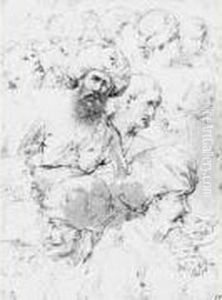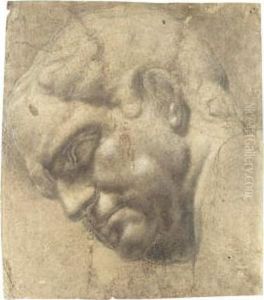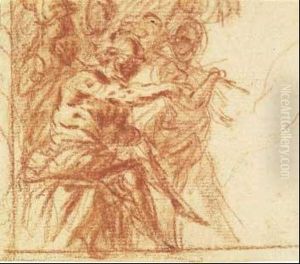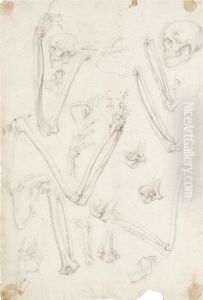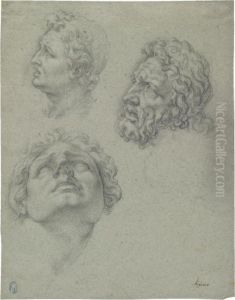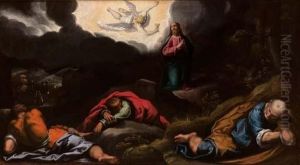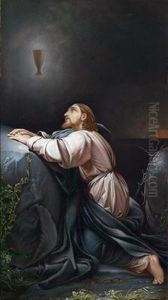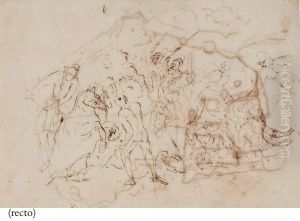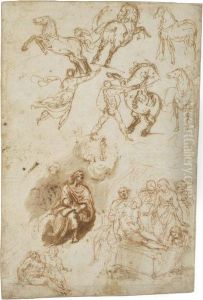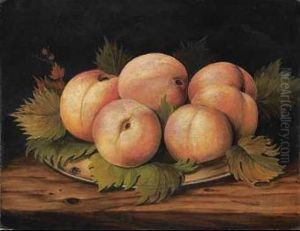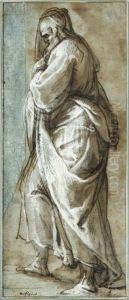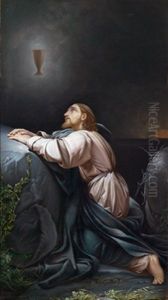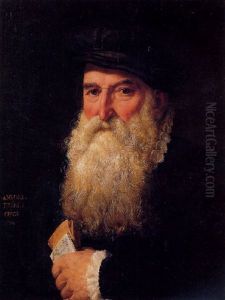Ambrogio Giovanni Figino Paintings
Ambrogio Giovanni Figino, an Italian painter of the late Renaissance period, was born in Milan in 1548. He was a prominent figure in the Lombard school of painting, which was known for its detailed and realistic portrayal of figures and landscapes. Figino is often remembered for his skillful use of color and his ability to capture the texture of fabrics and the human form with remarkable accuracy.
Figino received his artistic training in Milan, likely in the workshop of Giuseppe Meda. His style was influenced by the works of Leonardo da Vinci, whose techniques he studied and emulated. This influence is evident in Figino's attention to the nuances of human anatomy and the delicate treatment of light and shadow. Throughout his career, he remained a devoted follower of Leonardo, incorporating the master's sfumato technique into his own paintings to achieve subtle gradations of tone and form.
He was not only a painter but also an accomplished draftsman and portraitist. Figino's portraits are celebrated for their realism and psychological depth. One of his most famous works is the 'Portrait of a Musician', which showcases his mastery in depicting the intricate details of the subject's attire and the thoughtful expression on his face.
Figino's religious and mythological scenes are also noteworthy. His altarpieces and frescoes adorned many churches and palaces in Milan and its surroundings, displaying his versatility and the high demand for his work. Despite his success, there are few documented details about his personal life, and much of what is known about him comes from the analysis of his artworks and a few contemporary sources.
Ambrogio Giovanni Figino died in Milan in 1608. His legacy is preserved in the collections of major museums and galleries, where his works continue to be admired for their beauty and technical excellence. Figino's contributions to the Lombard school and his adherence to Leonardo's principles have cemented his place in the annals of Italian Renaissance art.
